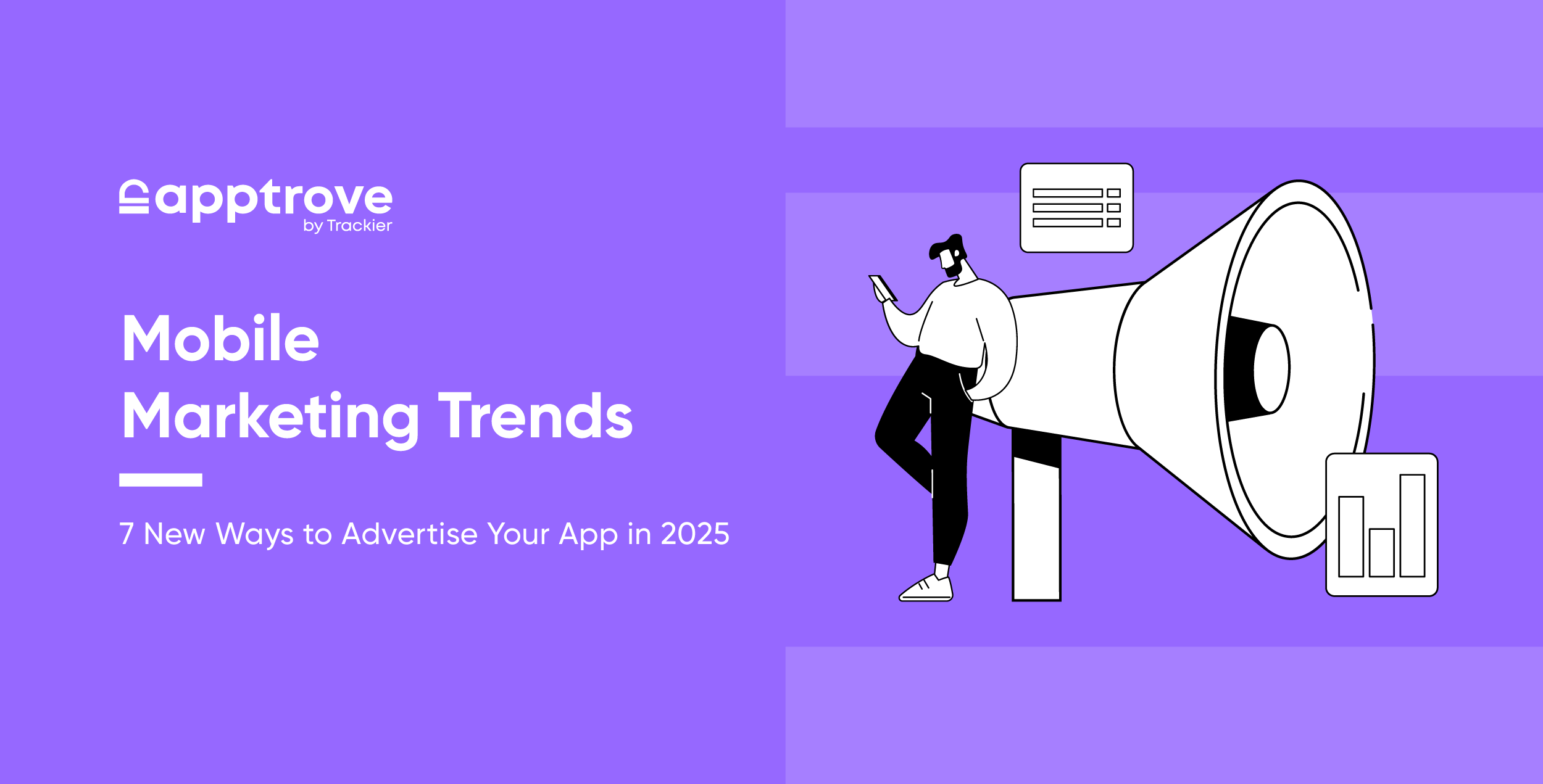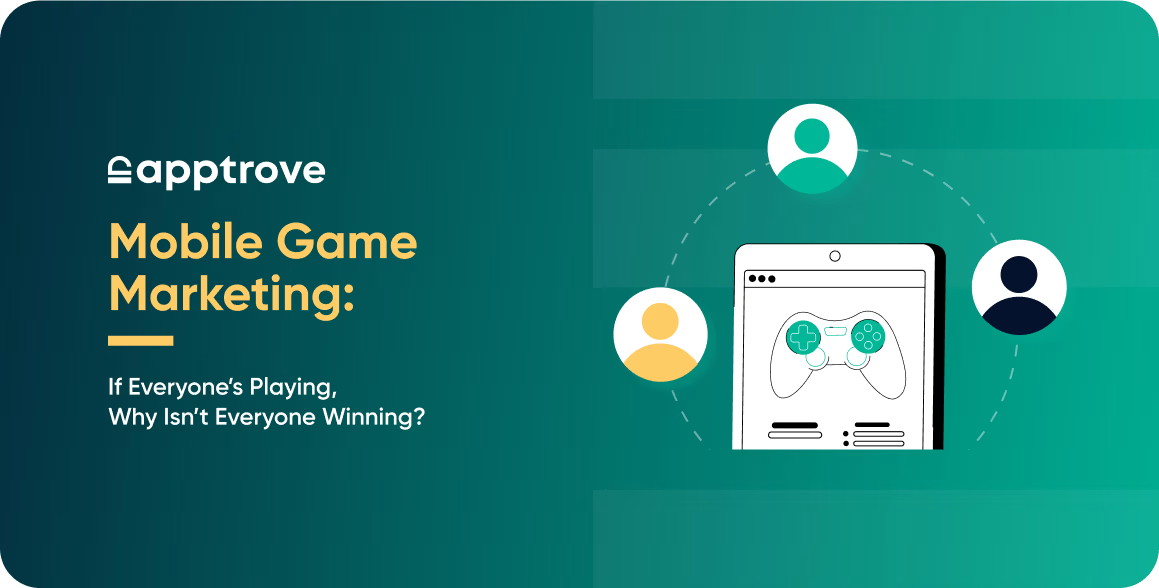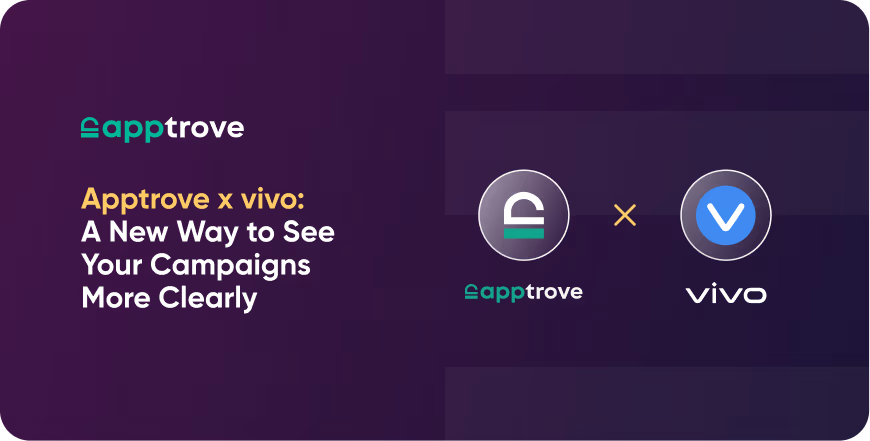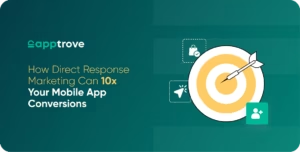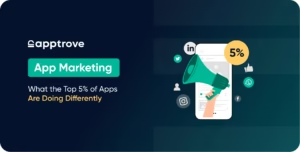Reports state that 70.3% of the global population uses mobile phones. Another report states that mobile devices make up almost 50% of global web traffic.
These statistics reflect that mobile phones are no longer just devices. They’ve become a crucial part of our lives.
No wonder, companies are investing in mobile marketing to uplift their game. In fact, the global mobile marketing market, worth $11 billion in 2020, will cross $57.85 billion by 2030 with a CAGR of 18%.
If you want your app to thrive in 2025, mobile marketing is the key to achieving your revenue goals.
However, with user behavior shifting and technology evolving, outdated strategies won’t cut it anymore. You must adopt innovative approaches that grab eyeballs and deliver measurable results.
This post breaks down seven mobile marketing trends to advertise your app in 2025 and beyond. First, let’s understand the stages of mobile app marketing.
Let’s get started!
The Key Stages of Mobile App Marketing
Let’s understand the three key stages of mobile marketing for your app.
1. Awareness
Users can’t download your mobile app if they don’t know it exists in the first place. Awareness is the first stage that introduces your app to potential users. Its key goal is to ensure the target audience knows about the app and its offerings.
Building awareness can help you cut through the noise in saturated app marketplaces and create a positive first impression that encourages users to explore more about the app. For instance, an awareness campaign highlighting your app’s features can create curiosity among the target market and achieve traction.
2. Acquisition
Awareness alone doesn’t translate into users or downloads. You must have a solid acquisition strategy to guide users to take action.
A well-executed acquisition strategy can attract high-quality users and increase the chances of long-term relationships. For instance, an acquisition campaign offering a free trial or targeted discount through social media ads can lead to app downloads.
3. Retention
Retaining users can help achieve high lifetime value (LTV), thereby ensuring long-term growth and ROI. The key goal of this stage is to keep the users engaged and encourage them to use the app. This helps prevent churn and ensures loyal users.
For instance, incentivizing users with rewards or offering personalized recommendations can keep them engaged and increase the chances of user retention.
7 Mobile Marketing Trends to Advertise Your App in 2025
Understanding and implementing recent mobile app market trends can strengthen your strategies at every stage—whether generating awareness, increasing acquisition, or improving retention.
The way we saw predictions for 2024 shaping the industry, they have now gone a notch higher in 2025, setting new benchmarks for innovation and growth.
Here are the seven recent mobile marketing trends.
1. App Marketing Optimization Is More Critical Than Ever
Reports reveal that worldwide mobile users will cross 7.49 billion by 2025. This means that the competition in app stores will be massive, and your app must have solid visibility to stand out and increase the chances of downloads.
Moreover, the algorithms powering app stores like Google Play and the Apple App Store prioritize apps based on relevance, user feedback, and performance metrics.
So, you must ensure your app’s features are relevant to the target market’s needs, perform seamlessly, and offer a top-notch user experience. This is crucial for effective user acquisition and long-term retention.
Here are a few tips to follow.
- Work on the Search Engine Optimization (SEO) Aspect: Optimize key components like your mobile app’s title, description, and metadata with relevant keywords to improve discoverability. Besides, use high-quality screenshots to highlight your app’s key features and benefits.
- Implement User Feedback and Ratings: Track user app reviews to identify and resolve key pain points. Ensure your app has a good rating (4 or higher) to increase the chances of downloads.
- Implement Deep Linking: A deep linking strategy can help direct users to specific content or pages within your mobile app. This streamlines the user journey and increases engagement and retention.
- Prioritize App Speed: App performance directly impacts acquisition and retention. So, ensure your app’s content loads fast and seamlessly. Continuously address and fix any bugs.
2. In-App Personalization Is Proving a Game-Changer
Today, users don’t settle for a one-size-fits-all experience. They expect personalized experiences that feel designed just for the user.
Personalization can foster strong connections with users, increasing their likelihood of staying engaged and loyal. This can lead to high retention rates and long-term value.
According to McKinsey, personalization marketing can:
- Reduce customer acquisition costs by as much as 50%
- Lift revenues by 5-15%
- Increase marketing return on investment by 10-30 %
This means that integrating in-app personalization can help you meet user expectations and create a built-in marketing channel. This improves retention and creates an indirect advertising channel. Moreover, positive user experiences can encourage organic referrals, thus boosting app downloads.
Here are a few crucial tips to consider.
- Provide Behavior-Based Recommendations: Use machine learning (ML) technology to analyze user actions and suggest content, features, or products. For instance, an eCommerce app can recommend items similar to past purchases or frequently browsed categories.
- Offer Personalized Onboarding: Offer a customized onboarding journey. For instance, a banking app can ask users about their preferences, such as the type of accounts they’re interested in or their financial goals. Based on this information, the app can personalize features like customized savings plans or tailored investment recommendations.
- Run Smart Promotions: Deliver real-time, relevant promotions. For instance, a food delivery app could offer discounts during lunchtime or recommend nearby restaurants.
- Send Push Notifications: Use personalized push notifications based on user behavior, preferences, or past interactions. For example, send tailored offers or updates about app features that align with the user’s interests, encouraging them to re-engage.
3. Conversational AI Is Becoming Increasingly Prominent
Today, chatbots and virtual assistants powered by AI are redefining user experiences. They are helping apps build stronger relationships with audiences while driving acquisition and retention.
Conversational AI isn’t just about automation. It’s about creating meaningful, human-like interactions that enhance user experience. Apps leveraging this trend can increase acquisition by simplifying the user journey and improve retention by delivering personalization.
According to reports, the global conversational AI market, including chatbots and intelligent virtual assistants, will cross $14 billion by 2025.
Here are a few crucial tips for leveraging conversational AI to advertise your mobile app.
- Run AI-Powered Engagement Campaigns: Design conversational ads that interact with users in real-time. For instance, a food delivery app can use chatbot ads on social media to ask users about their favorite cuisines and recommend nearby restaurants.
- Share Personalized Product Recommendations: Leverage AI to analyze user data and provide customized suggestions. For instance, a shopping app can recommend items based on past purchases or browsing history. This can improve the chances of conversion.
- Integrate Voice Assistant: Enable your mobile app to connect with AI voice assistants like Amazon Alexa or Google Assistant. For instance, a fitness app can let users log workouts, check progress, or receive personalized fitness tips through voice commands.
- Offer 24/7 Customer Support: Deploy AI-driven chatbots for instant problem resolution. For instance, an eCommerce app can offer real-time answers about order tracking, refunds, or product availability. This can increase customer experience.
4. Augmented Reality (AR) Continues to Transform the App Shopping Experience
Augmented reality (AR) is transforming traditional mobile advertising by blending product discovery with interactive experiences. It allows users to interact with digital content in real-time, enhancing their shopping experience and helping brands create more engaging, memorable interactions.
No wonder, the mobile AR market, which was valued at 11.9 billion dollars in 2024, will cross 13.8 billion dollars in 2025, highlighting its increasing relevance in reshaping consumer experiences.
Here’s how to leverage AR.
- Interactive Product Previews: Create AR experiences that allow users to virtually try your app’s features or products before installing the app. For instance, an app offering home decor could let users visualize how furniture looks in their own space via AR.
- Run AR-Driven Ads: Leverage AR filters and effects on platforms like Instagram to create interactive ads. This can boost engagement and increase the chances of downloads.
- Strategize Location-Based AR Promotions: Use AR to create location-based experiences, such as QR code scans that unearth special offers when users download your app.
5. Video Content is Still Leading the Mobile Marketing Industry
Platforms like TikTok, Instagram Reels, and YouTube Shorts have revolutionized how brands connect with their audiences, offering a unique opportunity to grab eyeballs in seconds. Video is still the most engaging content format, and its ability to convey messages quickly and emotionally makes it the perfect tool for driving awareness and acquisition.
No wonder, ad spending in the video advertising market, which was $191.3 billion in 2024, will grow at a 6.04% annual rate and cross $241.9 billion by 2028. In fact, $193.4 billion of total ad spending will come from mobile by 2028, reflecting the dominance of mobile video advertising in the future.
Here are a few actionable video content marketing strategies to consider.
- Craft Short-Form Ads: Create short video ads (15-30 seconds) to highlight your mobile app’s unique features.
- Create Educational Video Content: Simplify complex app features or onboarding processes in bite-sized, easy-to-understand videos. This can help users understand the app’s value proposition without hassles.
- Use Emotional Storytelling: Create a narrative of how your app benefits the users. Emotional connections help build brand loyalty and trust.
6. Social Commerce is Experiencing Substantial Growth
Social commerce is rapidly reshaping the retail landscape by merging eCommerce with social media, creating a seamless shopping experience directly within platforms like Instagram, Facebook, TikTok, and Pinterest.
This integration allows users to discover, browse, and purchase products without leaving the app, blending shopping with social interactions.
As the trend continues to boom, social commerce will become a trillion-dollar industry by 2028. The ability to sell directly through social platforms will thus become a must-have feature for app marketers.
Here are a few tips for leveraging social commerce to promote your app.
- Create Shoppable Social Media Posts: Use platforms like Instagram and Facebook to create shoppable posts that allow users to browse and purchase products directly through your app’s store.
- Leverage Social Media Influencer Partnerships: An influencer can share a product demo or offer exclusive promo codes, driving mobile app downloads.
- Offer Exclusive Social Commerce Offers: Use social media to promote limited-time offers or app-exclusive deals that can only be accessed through a social commerce platform. This can incentivize users to download your app to access these exclusive features.
7. Genuine User-Generated Content (UGC) Will Be Highly Valued
Leveraging positive user-generated content (UGC), including user reviews, testimonials, and feedback, can improve brand awareness, acquisition, and retention.
Yes, that’s right—every positive user review counts. The key is to motivate users to leave reviews, which you can use to advertise your app. Reports affirm that UGC creates a positive impression on potential users and makes a brand appear authentic and trustworthy.
Brands are already using UGC to showcase their app’s features and win user trust, and this trend is expected to rise further in 2025.
Here are a few crucial tips to consider.
- Create UGC Campaigns: Run contests encouraging users to create videos, stories, or photos highlighting their experiences with your mobile app. Offer monetary or non-monetary incentives (free gym membership, holiday tour package, etc.) to encourage more entries.
- Incentivize Reviews and Testimonials: Ask loyal users to share reviews and create testimonials. Use this content on your app’s social media or landing page to build credibility and trust.
- Use UGC for Paid Ads: Rather than creating professional videos or images, use real content from your users to run paid campaigns. This tactic can make your brand more trustworthy and relatable.
The Future of Mobile Marketing
As we can gauge from the emerging mobile advertising market trends, mobile marketing isn’t as simple as a decade ago. Today, as marketers, you must ensure personalization, offer the right features, and implement the right strategies that improve awareness, acquisition, and retention.
You must stay up-to-date with the latest trends to ensure your app stands out in the crowded marketplace.
Apptrove is a state-of-the-art mobile measurement partner (MMP) that offers real-time insights and features to ensure your marketing strategy creates maximum impact and you stay abreast of trends.
Let’s find out how.
1. Data-Driven Insights

Apptrove’s advanced mobile marketing analytics dashboard can help track every aspect of your app’s performance. For instance, it offers real-time data to help you understand user behavior and acquisition trends. Moreover, you can track and optimize KPIs like LTV (Lifetime Value), engagement, and retention. This ensures that your campaigns are always data-driven, leading to improved conversions.
2. Fraud Protection

With mobile marketing becoming a key growth driver, the risk of fraud is higher than ever. Apptrove’s real-time fraud protection ensures your marketing efforts are safe against fraud. It identifies and blocks suspicious activity before it affects your campaign.
3. Customizable Deep Linking and Audience Segmentation

Deep linking can prove a game-changer for your mobile app and boost conversion rates. Google reveals that deep-linked ads have a 2x higher conversion rate than traditional mobile ads.
Apptrove’s deep linking suite enables precise targeting by directing users to specific in-app content, thus maximizing user engagement.
Summing Up
As the mobile-first approach continues to dominate, brands must adapt to meet users where they spend most of their time—on their mobile phones.
The seven new mobile marketing trends and tips shared in this post can help you streamline your mobile app marketing efforts, boost user acquisition, and enhance retention strategies.
Moreover, with a mobile attribution platform like Apptrove, you can gain real-time insights, track campaign performance, and optimize your efforts to ensure a positive ROI.
Connect with our team today to learn how Apptrove can maximize your app’s engagement.
